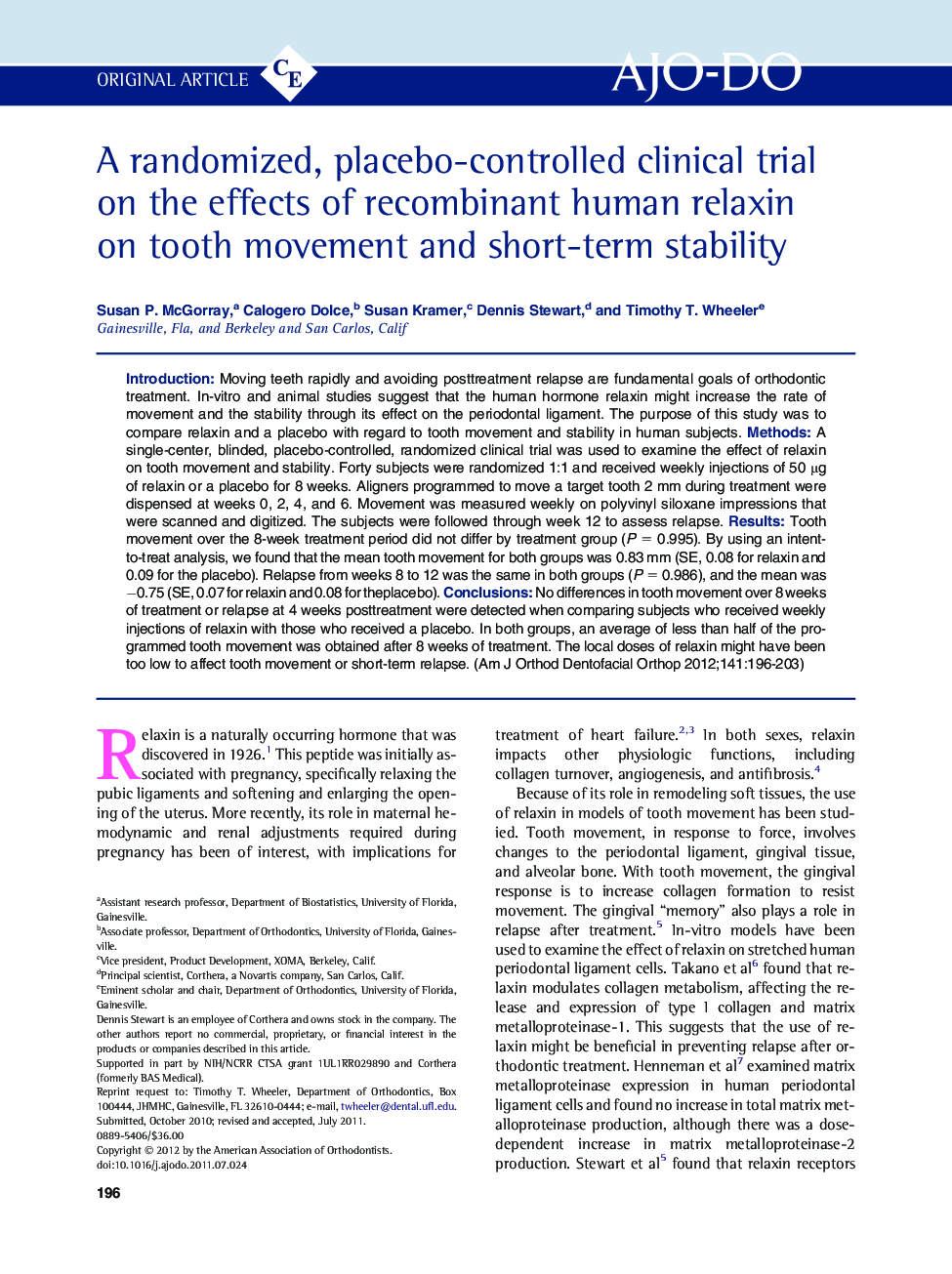| Article ID | Journal | Published Year | Pages | File Type |
|---|---|---|---|---|
| 3117081 | American Journal of Orthodontics and Dentofacial Orthopedics | 2012 | 8 Pages |
IntroductionMoving teeth rapidly and avoiding posttreatment relapse are fundamental goals of orthodontic treatment. In-vitro and animal studies suggest that the human hormone relaxin might increase the rate of movement and the stability through its effect on the periodontal ligament. The purpose of this study was to compare relaxin and a placebo with regard to tooth movement and stability in human subjects.MethodsA single-center, blinded, placebo-controlled, randomized clinical trial was used to examine the effect of relaxin on tooth movement and stability. Forty subjects were randomized 1:1 and received weekly injections of 50 μg of relaxin or a placebo for 8 weeks. Aligners programmed to move a target tooth 2 mm during treatment were dispensed at weeks 0, 2, 4, and 6. Movement was measured weekly on polyvinyl siloxane impressions that were scanned and digitized. The subjects were followed through week 12 to assess relapse.ResultsTooth movement over the 8-week treatment period did not differ by treatment group (P = 0.995). By using an intent-to-treat analysis, we found that the mean tooth movement for both groups was 0.83 mm (SE, 0.08 for relaxin and 0.09 for the placebo). Relapse from weeks 8 to 12 was the same in both groups (P = 0.986), and the mean was −0.75 (SE, 0.07 for relaxin and 0.08 for theplacebo).ConclusionsNo differences in tooth movement over 8 weeks of treatment or relapse at 4 weeks posttreatment were detected when comparing subjects who received weekly injections of relaxin with those who received a placebo. In both groups, an average of less than half of the programmed tooth movement was obtained after 8 weeks of treatment. The local doses of relaxin might have been too low to affect tooth movement or short-term relapse.
